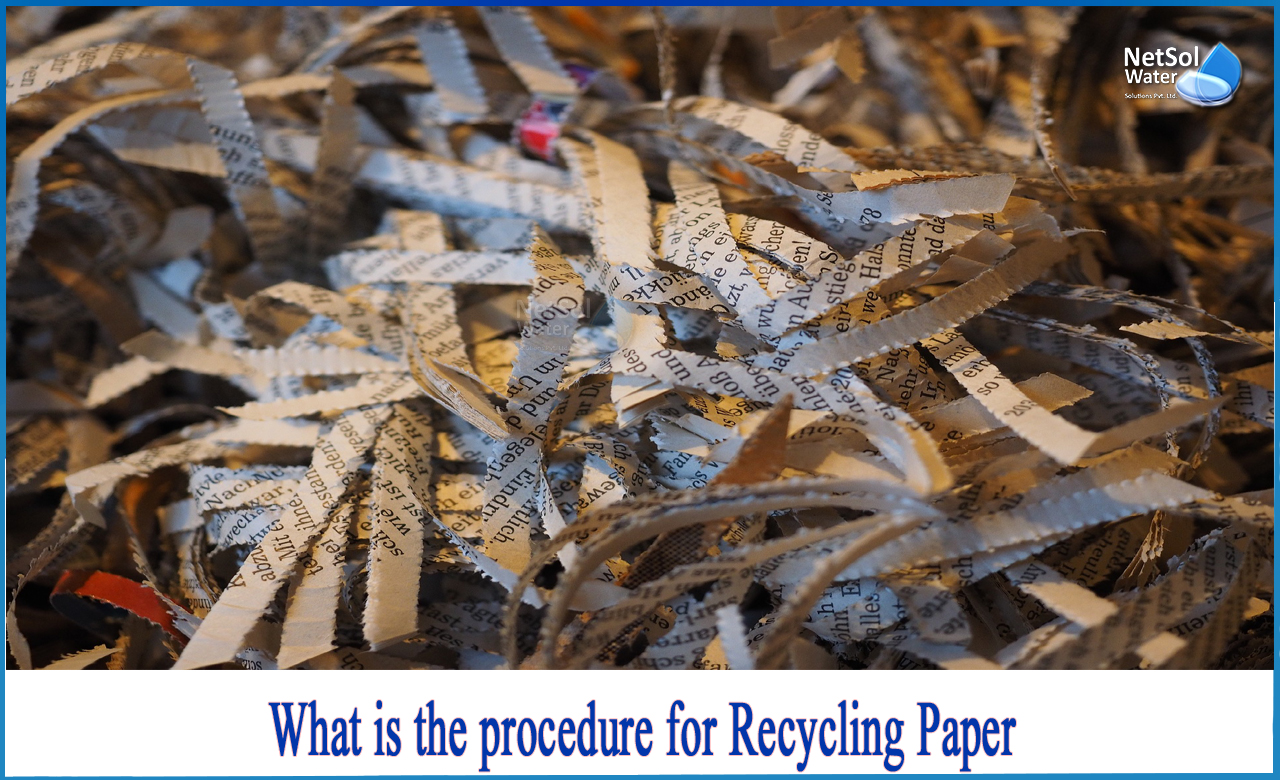What is paper recycling?
Paper recycling is the process of converting waste paper into new paper goods. It has several significant advantages:
It prevents waste paper from entering homes and emitting methane as it degrades. Because paper fiber includes carbon, recycling keeps the carbon locked up and out of the atmosphere for a longer period of time. Approximately two-thirds of all paper products in India are now recovered and recycled, however not all of it is recycled into new paper.
Which paper is used to make recycled paper?
Mill broken paper, pre-consumer waste, and post-consumer waste are the three types of paper that may be used as feedstocks to make recycled paper.
-Mill broken is paper trimmings and other paper debris from paper production that is recycled in a paper mill.
-Pre-consumer waste is material that has left the paper mill but has been dumped before it is ready for consumer use.
-Post-consumer waste is material that has been thrown after being used by the consumer, such as old corrugated containers (OCC), magazines, and newspapers.
-Scrap paper is recycled paper that is commonly used to make moulded pulp packaging.
What is the purpose of recycling paper?
Paper is one of the simplest materials to recycle. Paper is recycled to make new paper products. This reduces waste while also conserving materials and energy utilized in the production of paper from scratch. The lifespan of materials is extended and the carbon impact is minimized by the production process of recycling paper.
What is the procedure for recycling paper?
Step 1: Clean paper is first gathered and segregated from other waste. Once at the paper recycling facility, it is separated into several categories such as cardboard, magazine paper, newspapers and office documents. In the recycling process, each object is handled differently.
Step 2: The paper is then processed into pulp. Typically, the pulp is then filtered many times to eliminate big blobs of glue, plastic fragments, and staples.
Step 3: If there is ink on the paper, it is removed during the de-inking process. After the ink has been dissolved, chemicals and air are introduced into a floating device to remove it from the paper. The fiber can then be bleached to make it whiter.
Step 4: The last phase in the paper recycling process is to convert the cleaned paper pulp into a new paper product. Virgin wood fibers are occasionally added to strengthen the strength of the paper, however recycled paper fibers can be used alone.
Step 5: The pulp is blended with chemicals and warm water before being put through a papermaking machine. The water is removed, allowing the fibres to join and produce a watery sheet. More water is then squeezed out with powerful rollers, revealing a new sheet of paper.
Paper Recycling at Home
Before putting paper into your recycling bin at home, make sure it's clean. Most standard office paper may be recycled, however for paper food packaging, check the label to ensure any residue is removed.
Recycling of newspapers and magazines
Before recycling newspapers and magazines, remove any plastic wrapping. Some glossy, hefty pages cannot be recycled.Paper may be recycled if it does not spring back after being scrunched.
Shredded paper recycling
Most organizations and workplaces inquire if shredded paper may be placed in paper recycling containers. Some municipalities do not take shredded paper as part of normal domestic paper collections.
Conclusion
Recycling helps in the reduction of GHG emissions. Recycling paper uses 70% less energy and water than producing new paper goods from trees. Almost, one tonne of paper recycled saves around 17 trees and a space of 3.3 cubic yards.Paper recycling eliminates the need for the damaging paper mills, lowering air pollution by up to 74%.
Choose the best company for your waste management!
Talk to one of our advisers at Netsol Water to discover more about paper waste management practices and how your company can go greener. Contact us at +91-9650608473 or drop a mail at enquiry@netsolwater.com to remain up to date regarding the latest techniques to enhance your business's waste management.



